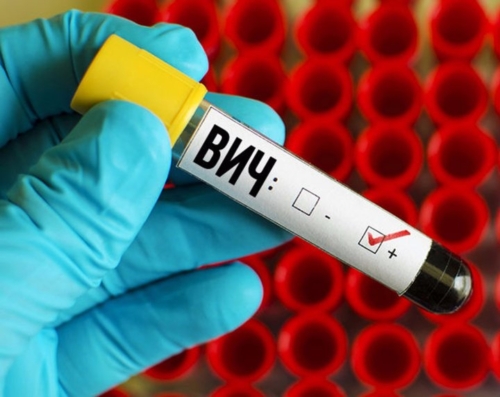KKO:2015:84 Attempted aggravated assault Intent
Attempted aggravated assault
Intent
Attempt at an offence
Proceedings in lower courts A, with the knowledge of being HIV-positive, had had unprotected sexual intercourse with B without disclosing his illness to B. B had not contracted HIV. The question before the Court is whether the probability of B’s contracting HIV had been high enough to render A guilty of attempted aggravated assault.
Judgment of Western Uusimaa District Court on 15 March 2012
Western Uusimaa District Court found A guilty of attempted aggravated assault. The Court considered it to have been demonstrated that A had, on 31 May 2011, attempted to injure the health of B, without employing physical violence, by engaging her in unprotected sexual intercourse despite the fact that A knew himself to be HIV-positive. By his actions, A had attempted to cause B to contract HIV. The attempt had not been successful, as B had not contracted HIV.
In its reasoning, the Court stated, firstly, that it considered it to have been proven, on the basis of B’s coherent and credible account, that the parties had engaged in unprotected sexual intercourse on one occasion.
The Court found A’s actions to have been intentional, as A had known himself to have HIV, and as the possibility of B’s contracting HIV from him had been realistic, albeit improbable. The fact that HIV can be transmitted through unprotected intercourse is notorious. Whether the infection is or is not transmitted through unprotected sexual intercourse depends on chance. The Court found that A must have considered it relatively likely that B would contract HIV.
The Court considered HIV to be a serious disease, and found that the offence had been aggravated also when assessed as a whole. A had known about his condition and taken a conscious risk. By his actions, A had attempted to injure B’s health by giving her a serious, lifelong disease.
The ruling was delivered by District Judge Sanna Mantila and lay judges.
Judgment of Turku Court of Appeal on 1 November 2012
A appealed to Turku Court of Appeal and demanded that the charge against him and the claim for damages be dismissed. The Court of Appeal found no reason to interpret the evidence differently from the District Court or to approach the matter from a different judicial perspective.
The ruling was delivered by members of the Court of Appeal Mariitta Lehmus, Hannele Satopää and Pirjo Tammio.
Appeal to the Supreme Court
The Supreme Court granted A leave to appeal.
In his appeal, A demanded that the charge against him be dismissed.
In their responses, the prosecutor and B demanded that the appeal be dismissed.
Interim proceedings
The Supreme Court requested expert opinions from the National Institute for Health and Welfare and the Hospital District of Helsinki and Uusimaa. The National Institute for Health and Welfare and the Hospital District of Helsinki and Uusimaa supplied expert opinions as requested. The Court then invited the parties to comment on the expert opinions, and the prosecutor and A responded. B did not use the opportunity to respond.
Oral hearing
The Supreme Court held an oral hearing in the case.
Ruling of the Supreme Court
Reasoning
Background and questions to be answered
1. The prosecutor had charged A with attempted aggravated assault on the grounds that A had, on 31 May 2011, attempted to injure the health of B, without employing physical violence, by engaging her in unprotected sexual intercourse. According to the charge, A had known himself to be HIV-positive. By his actions, A had therefore attempted to cause B to contract HIV. According to the charge, the objective of the act had been to transmit a serious disease, and the offence had been aggravated also when assessed as a whole.
2. Lower courts had found A guilty of the charge brought against him. They had found that A had been aware of his condition and of the fact that HIV can be transmitted through unprotected intercourse. Despite this knowledge, A had engaged B in unprotected intercourse without disclosing his condition to her. Lower courts had found that A must have considered it relatively likely that B would contract HIV through unprotected intercourse with him. The act had therefore been intentional. The attempt had not been successful, as B had not contracted HIV.
3. As per A’s appeal, the question before the Supreme Court was whether A’s actions constituted attempted aggravated assault. The first fact to establish was whether the intercourse had, as the prosecutor claimed, been unprotected. If the intercourse had been unprotected, the next question was whether A’s account of his having taken his antiviral drugs as instructed was credible. If A’s account was deemed to be credible, the Court then had to decide what weight should be given to said drug therapy when evaluating whether A had acted with intent.
Applicable legal provisions
4. Pursuant to Chapter 21, Section 5(1) of the Criminal Code, a person who employs physical violence on another or, without such violence, injures the health of another shall be sentenced for assault. Pursuant to Chapter 21, Section 6, if in the assault grievous bodily injury or serious illness is caused to another, and the offence is aggravated also when assessed as a whole, the offender shall be sentenced for aggravated assault. An attempt is punishable.
5. Pursuant to Chapter 5, Section 1(1) of the Criminal Code, an attempt of an offence is punishable only if the attempt has been denoted as punishable in a provision on an intentional offence. Pursuant to Chapter 5, Section 1(2) of the Criminal Code, an act has reached the stage of an attempt at an offence when the perpetrator has begun the commission of an offence and brought about the danger that the offence will be completed. An attempt at an offence is involved also when such a danger is not caused, but the fact that the danger is not brought about is due only to coincidental reasons.
Evidence on HIV and its transmission through sexual intercourse
6. The Supreme Court felt it pertinent to examine what is known of HIV, the ways in which it can be transmitted, and the effect of drug therapy on the infectiousness of the disease in the light of current scientific information. For this purpose, the Supreme Court requested expert opinions from the Hospital District of Helsinki and Uusimaa and the National Institute for Health and Welfare. The Supreme Court then invited the signatories of those expert opinions, Department Head C (Hospital District of Helsinki and Uusimaa) and Research Professor D (National Institute for Health and Welfare), to give evidence in an oral hearing.
7. The Supreme Court examined the infectiousness of HIV in connection with an imperilment case heard earlier today (ruling No R2012/1093).
Facts about HIV
8. HIV (human immunodeficiency virus) is a virus that causes a progressive failure of the immune system. HIV infects and destroys T helper cells in blood (CD4 lymphocytes) and weakens the patient’s immunity. Left untreated, HIV leads to AIDS, and ultimately to the death of the patient within approximately 10 years on average.
9. These days, HIV can be treated with drug therapy. Although HIV is not curable with current treatments, the proliferation of viruses can be prevented with antiretroviral drug therapy and their number in plasma kept below the limit of detection. Successful treatment increases the number of CD4 cells and decreases the risk of opportunistic infections. If drug therapy is initiated in time and the patient takes their drugs as instructed, HIV usually does not have a significant impact on the patient’s life expectancy compared to the background population. However, HIV cannot be eliminated from the body.
10. HIV can be transmitted through sexual intercourse, by the transfer of blood, and from a mother to a child during pregnancy, childbirth, or breastfeeding. The risk of HIV transmission through sexual intercourse depends on many factors, such as the viral load in the HIV-positive individual’s blood, the type of sexual activity, whether a condom is used, the condition of the sex organs of the individuals engaged in sexual activity and the mucous membranes that are exposed to the virus, whether the HIV-positive individual is taking antiretroviral drugs, and the immunological characteristics of the individuals engaged in sexual activity.
11. According to C, the risk of transmission through unprotected vaginal intercourse is 1:200–1:2,000 for women and 1:700–1:3,000 for men, if the HIV-positive individual is not taking antiviral drugs. The risk of transmission may be 1:100, if the virus was contracted recently or if an individual has another sexually transmitted disease. The presence of a sexually transmitted disease that causes open sores has been found to increase the risk of HIV transmission during intercourse without a condom 5–10-fold.
12. C and D told the Court that it is known that the HIV viral load in an individual’s blood correlates strongly with the probability of transmission: The higher the viral load, the higher is the probability of transmission. They also told the Court that international studies have proven that successful antiviral drug therapy affects the infectiousness of the virus through sexual intercourse.
13. C referred to, among other sources, to the PARTNER study, which had followed couples in which one partner was HIV-negative and one partner was HIV-positive. To be included in the study, the HIV-positive partner had to be on antiretroviral drug therapy and the HIV viral load in their blood had to be less than 50 copies/ml. The couples had to have engaged in condomless intercourse within the previous month, and they were given information about safe sex and the protective effect of condoms. According to an interim report published in 2014, no infections had been observed during the study that could be virologically linked to the HIV-infected partner, when the HIV viral load in the HIV-positive partner’s blood had been less than 200 copies/ml. According to a statistical analysis, the upper limit of a confidence interval of 95% was 0.4 infections per 100 couple years of follow-up for all types of unprotected intercourse. The interim report (Rodger A, Bruun T et al; HIV transmission risk through condomless sex if HIV+ partner on suppressive ART; PARTNER study; Abstract 153LB) concluded that the risk of transmission through both vaginal and anal intercourse is extremely low on the whole, but that more information is still needed with regard to sexual activity between men. According to C, the statistical analysis and the cited confidence intervals have been subject to some debate among researchers. The study continues with regard to male couples.
Evaluation in the present case
Whether a condom had been used during sexual intercourse
14. A and B told the Court that they had met at a rehabilitation facility. They had engaged in intercourse on two or three occasions while at the facility, the first of which, on 31 May 2011, had been the intercourse referred to in the charge. After the first intercourse, A had told B that he had hepatitis C, and B had consequently bought condoms, which had been used thereafter. A had not told B that he had HIV, and B had only found out about the virus from another source at a later time.
15. A told the Court that a condom, which he had brought with him, had been used during the first intercourse. However, the use of condoms had not been discussed. B, on the other hand, told the Court that the intercourse had been unprotected. B stated that she would not have consented to sex with an HIV-positive individual even with a condom. B had been deeply shocked to find out that A was HIV-positive. Her fear of infection had still not dissipated completely.
16. According to a medical report, B had been tested for HIV on 18 July 2011. According to B’s patient records, her mental stability had deteriorated after leaving the rehabilitation facility. The Supreme Court found B’s account, which was supported by the medical report and patient records, credible. The Court therefore considered it to have been proven that the intercourse referred to in the charge had been unprotected.
Whether A had attempted to transmit HIV intentionally
17. For an individual to be found guilty of attempted aggravated assault, the act must have been intentional. Pursuant to Chapter 3, Section 6 of the Criminal Code, a perpetrator has intentionally caused the consequence described in the statutory definition if, firstly, the causing of the consequence was the perpetrator’s purpose or he or she had considered the consequence as a certain result of his or her actions.
18. A told the Court that he had been on antiviral drug therapy since 2005 or 2007. He had once, years ago, stopped taking his drugs momentarily, but had otherwise taken them regularly. The HIV viral load in his blood had been undetectable for at least the previous five years. A told the Court that he also had hepatitis C. A considered the risk of transmission to have been extremely low in these circumstances.
19. Although A presented no evidence of the HIV viral load of his blood, the Court had no reason to doubt his detailed account of his drug therapy, its duration, his awareness of the fact that the drugs lower the risk of transmission, and how his condition is continuously controlled. The Supreme Court found that no such factors had come to light in the case that would lead to the conclusion that A had intended to injure B’s health or considered it certain that his HIV would be transmitted to B.
20. Pursuant to Chapter 3, Section 6 of the Criminal Code, a consequence has also been intentionally
caused if the perpetrator has considered it as a quite probable result of his or her actions. In these circumstances, the evaluation of intent is based on the perpetrator’s awareness of the consequences of his or her actions. The probability of the consequence must be evaluated form the subjective perspective of the perpetrator: How probable did the perpetrator consider the consequence of his or her actions to be (KKO:2013:82, paragraph 10).
21. The legislative rationale for the provision (Government bill No 44/2002, p. 84) references the interpretation established in the Supreme Court’s case law and explains that the wording “considered it as a quite probable result of his or her actions” refers to the perpetrator having, at the time of the act, considered it more probable than not that the consequence would materialise. In practice, evaluations of intent and probability are usually based on the facts on the basis of which the perpetrator had, at the time of the act, been able to estimate the potential consequences of his or her actions (KKO:2012:98, paragraph 8, and KKO:2013:82, paragraph 11).
22. As stated above in paragraph 11, the risk of transmission through vaginal intercourse is 1:200–1:2,000 for women, if their HIV-positive male partner is not taking antiviral drugs; if the HIV-positive partner is taking antiviral drugs as instructed, the risk of transmission is extremely low. A had been on antiviral drug therapy, which is likely to have lowered the risk of transmission. The Supreme Court found that the probability of transmission in these circumstances had been so low that even A’s hepatitis C status could not have raised the risk of transmission to a level where B’s contracting HIV from A had been more probable than her not contracting HIV. The charge for attempted aggravated assault therefore had to be dismissed.
Operative part
The Supreme Court overrules the Court of Appeal’s judgment, and dismisses the charge for attempted aggravated assault. A is to be relieved of his sentence.
The ruling was delivered by Justices Liisa Mansikkamäki, Pertti Välimäki, Juha Häyhä, Jorma Rudanko and Tuula Pynnä. Referandary Jukka Siro.




